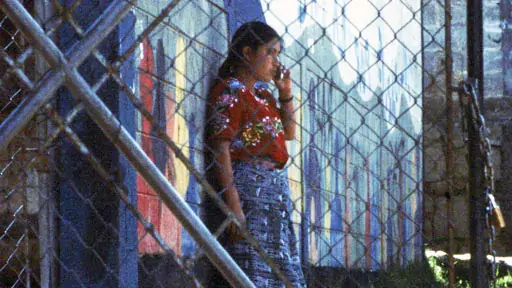Indigenous Calendar October, 2014: Carl Sagan, the K'iche' Maya and E.T.

There are those who believe that extra-terrestrials built the great Maya pyramids. Perhaps they also believe that when E.T. phoned home across interstellar space, he was contacting the descendants of those same extra-terrestrial pyramid builders. When the film E.T. the Extra-Terrestrial was released in 1982 there were very few cell phones, but humans had already been making a serious attempt to contact extra-terrestrials for five years. The US National Aeronautics and Space Administration (NASA) launched the spacecraft, Voyager I, on September 5, 1977 (the same year that Star Wars was released).
Voyager I carries messages from humans intended for any would-be extra-terrestrial civilization that might find the spacecraft one day. Some of those messages are recordings of greetings spoken in indigenous languages. Others are recordings of indigenous music and still others are photographs of indigenous people. In September, 2013, NASA announced that in late August, 2012, Voyager I had entered the interstellar space inhabited by E.T. — some twenty billion kilometers from our sun. It is the first non-natural object (as far as we know) to leave our star system.
The spacecraft is called "Voyager" for a good reason: If we were to trace the enablers of such an achievement then noteworthy among them would be the so-called Voyages of Discovery — the best-known being Christopher Columbus' 'discovery' of the New World. Ironically, one of the most advanced civilizations in the whole world in 1492 was the 'New World' Maya Empire. Even more ironic is that the Maya's knowledge and understanding of astronomy and cosmology was so far in advance of European scholars at that time that they were much more likely to have foreseen the possibility of eventual human-extra-terrestrial contact than any previous human society. This is perhaps why some people still believe that they have already had such contact! Their long-count calendar is the most accurate ever devised and it seems somehow appropriate that the first human-made object to enter interstellar space would do so at a key moment of that calendar — just as it was about to cycle.
The late Carl Sagan was one of the most prominent scientists to work on the Voyager project. He chaired the committee that chose the messages to be carried on board the spacecraft. He had little doubt that if we didn't destroy ourselves first because of our political, cultural and economic differences we might one day make contact with E.T.
These connections would doubtless have been unknown to this K'iche' Maya woman when she phoned home one day in Guatemala and I happened to be there with my camera. If we don't destroy ourselves first maybe one day E.T. himself will see this photo. And maybe one day modern Maya people will understand how much their ancestors had to do with it without having contacted him first.
The K'iche' Maya are featured in our documentary, Ancient and Modern Mayan Peoples.
If you enjoyed reading this article, please consider supporting independent, advertising-free journalism by buying us a coffee to help us cover the cost of hosting our web site. Please click on the link or scan the QR code. Thanks!


